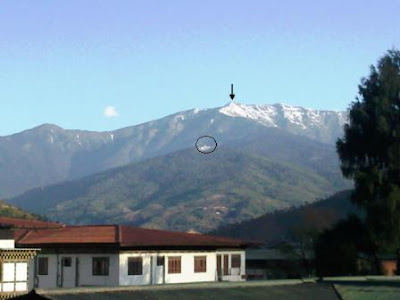
Kezang D Wangmo is very humble and modest when it comes to discussing her achievements as an actress, singer, dancer, poet and goodwill ambassador for organic farming in Bhutan. Sometimes, it is her husband, Dorji Tashi, coordinator of Loden, who reminds us of her awards or special projects. She speaks in a non-celebrity manner with strength and concentration in her voice. She is 23 years and 3 months old and she is planning the writing and production of her first movie.
Kezang was born in Paro, western part of Bhutan, and learned acting on her own at school performances and watching Bollywood films made in India without any special course or teacher. She acted in her first film, a tragic-romance, in 2009 which immediately made her famous bringing her two national awards: the Best Female Lead Actor and the Best Newcomer. Since then, she has acted in five other films, but she was not as satisfied with her roles offered in these movies as in the first one. ‘It was easy and natural to play in my first movie. I could simply be myself.’ – says Kezang hinting that the other films required her to fit into more common stories and characters.
Before becoming a well-known actress, Kezang already established her name as a singer through a local hit song ‘A la la ngi sem’ and today she keeps getting invited to sing and dance at schools, national celebrations, and community events. In 2007, she submitted her poem to the prestigious National Poetry Competition of the Tarayana Foundation and won the first prize. Her piece was a tribute to the fourth king of Bhutan and later published with other selected poems by the Queen Mother Ashi Dorji Wangmo Wangchuck.
I went to see Kezang’s recent movie in which she played a non-lead role of an English teacher at primary school in the countryside falling love with a man who just came home from a long stay in London to rediscover his roots. "Bhutanese mainstream movies, like this one, target an audience educated on Bollywood. These long 160-minute or so films always tend to have the same storyline with lots of music and a break in the middle. Given the production time and low budget, theoretically I could make 6 to 12 such a movies a year, but with my other professional and family commitments, I can only afford three or so a year. For one movie, depending on the role, producer and whether the wardrobe is provided, I get a fix fee of 70-100 thousands Ngultrum, US$1500-2200." This means that Kezang’s payment is not linked to the number of viewers of her films, even if producing popular films in Bhutan is apparently a good business.
 |
| On the cover sold at a temporary cinema hall in Paro |
Hearing about the Bollywood link I wonder whether there is a celebrity culture in Bhutan. "Currently, there is no celebrity culture here. People recognize me in the street and shops, but they don’t approach me for a picture or autograph. They stare at me only secretly; they behave as I was not there. However, it is slowly changing and when I’m invited to schools, kids want pictures and autograph. We also have sort of celebrity magazines, I was on the cover of one of them recently, and people call me to produce their commercials with me, but they can’t pay."
 |
| Surrounded by kids. |
Kezang is vegetarian and in her free time she promotes Happy Green Cooperative, the country’s new organic farming and food movement, especially among youth as an alternative to moving to Thimphu where jobs are scarce. When asked about Hollywood actors she appreciates, the names of Kate Winslet and Julia Roberts pop up. When asked about future plans, Kezang enthusiastically starts talking about her dream project of scripting, producing and acting in her own film. "This will be a movie for both Bhutanese and international audiences. It will be beautiful and well-done."
I can’t wait to see it.
 |
| Surrounded by nuns. |
Kezang D Wangmo: Beyond Praise
When your steps mark these mountain paths
many years from now,
stories will move the lips of those
you pass along the way.
As clouds gather nears the ridges of pine
below in his season’s yield
a farmer will tell you of wiser seeds
sown by one and one man tilled.
The school’s foundation
and the clinic’s wall,
the roads and the farms of our land,
blossomed to give us our health and hope
as the modern was grown by his hands.
He will speak of a leader
who like a powerful sword
would defend with clarity and grace
Against threats of militant action
Or corruption of inner space.
He will finish in whisper
of chaos like oceans,
how mountain storms gather
in confused explosion,
Of how one mans greatness
will be vivid and lasting
like the silence that comes
after the storms fierce passing,
Of a selflessness
that could endlessly reign,
of power grown great
by giving away.
But when your steps mark these paths
many years from today
the voices who praise
in spite of their phrases
will end in silence…
For beyond the sound of our voice,
and the word that we seek,
His majesty remains untouchable,
always above the praises we speak.
Copyright Ashi Dorji Wangmo Wangchuck





